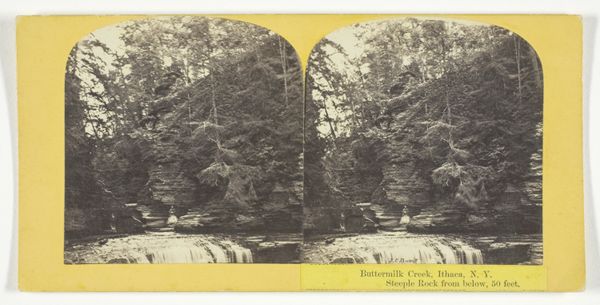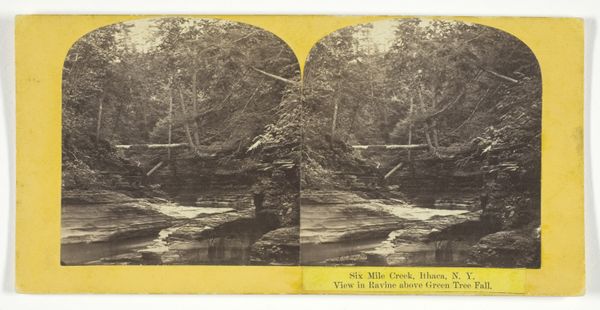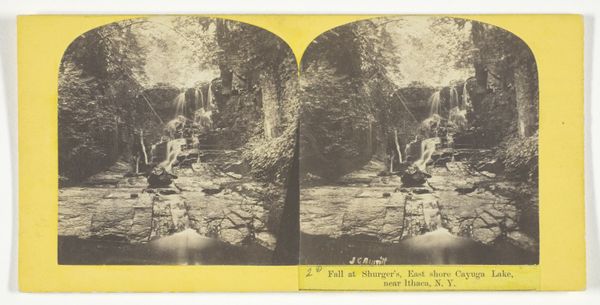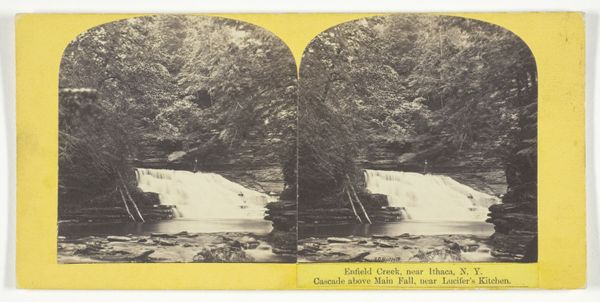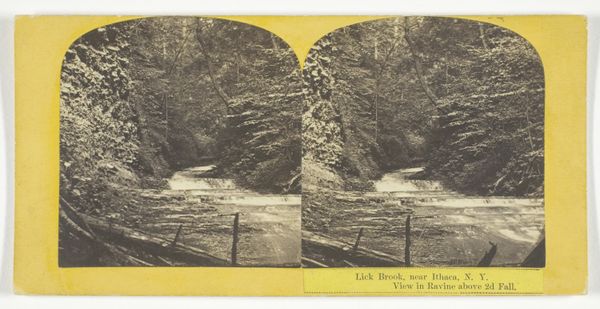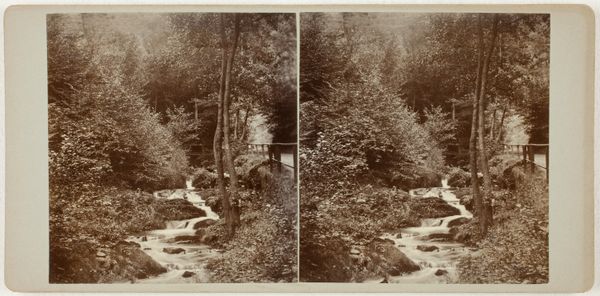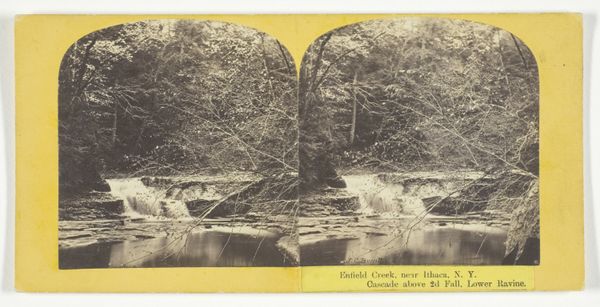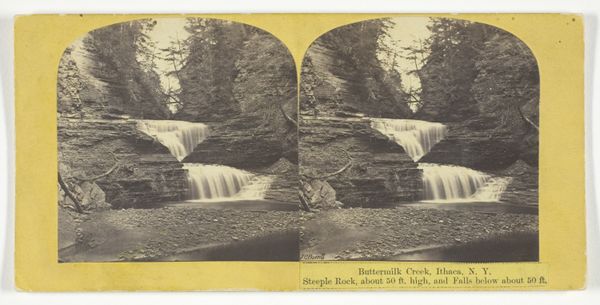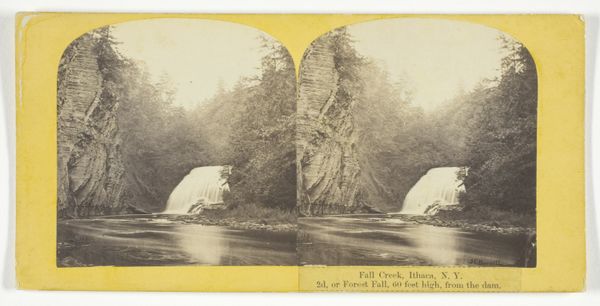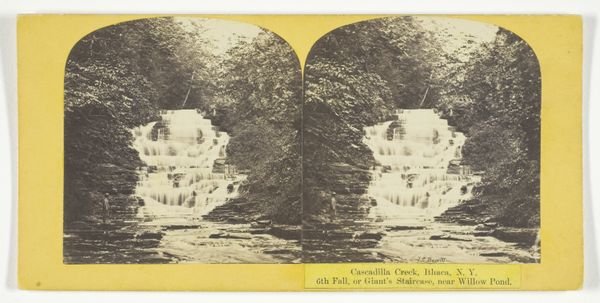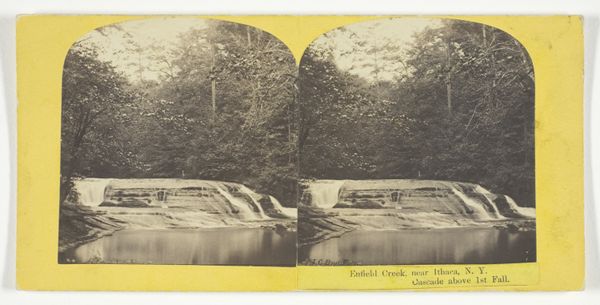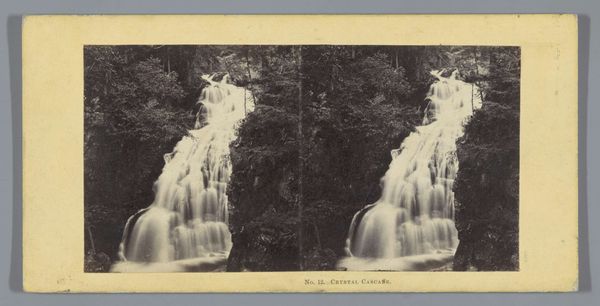
Lick Brook, near Ithaca, N.Y. Falls upper end of the Ravine 1860 - 1865
0:00
0:00
print, photography, gelatin-silver-print
#
16_19th-century
# print
#
landscape
#
photography
#
gelatin-silver-print
#
hudson-river-school
Dimensions: 7.5 × 7.2 cm (each image); 8.4 × 17.1 cm (card)
Copyright: Public Domain
Curator: This gelatin-silver print, “Lick Brook, near Ithaca, N.Y. Falls upper end of the Ravine,” was created between 1860 and 1865 by J.C. Burritt. What are your first impressions? Editor: Well, visually, it presents an immersive cascade—the eye travels down the falls, drawn in by the contrasting textures of rushing water against solid rock. It evokes a sense of the sublime, of nature's overwhelming power and beauty. Curator: Absolutely. The composition utilizes a strong verticality, emphasized by the slender trees framing the waterfall. These compositional elements echo the aesthetics found in Hudson River School paintings, focusing on the grandeur of the American landscape, don't you agree? Editor: Yes, and within that “grandeur,” it's critical to think about how the "untouched" wilderness was constructed as an idea that supported a project of nation-building which dispossessed Indigenous people of their ancestral lands. Early photography like this romanticizes a particular view of land, silencing other histories. Curator: I see your point. But even removing the historical context for a moment, you cannot deny the impact of the visual balance. The play of light and shadow across the water's surface demonstrates Burritt's mastery of photographic technique. The textures draw me into the perspective of what I imagine his studio might have had to contribute to this artwork, if anything, based on how photography used to be completed back then. Editor: Sure, technically proficient, but what purpose did this serve at a time of national fracture? The Civil War loomed large then. Was this meant as an escape, a visual retreat from the harsh realities of conflict? Does it provide insight into how ideas about landscape are shaped by broader national narratives of division and belonging? And to add on that idea, why this location, why not another one of similar aesthetic appeal? Curator: Those are all pertinent points to consider, adding many layers. I initially found it fascinating as an early example of photography capturing the sublime quality of nature. Editor: I can appreciate its formal qualities as an example of 19th-century landscape photography. But the artwork reminds us of how vital it is to approach any visual representation with a critical eye towards its social and historical underpinnings. It’s both a depiction and an argument.
Comments
No comments
Be the first to comment and join the conversation on the ultimate creative platform.
